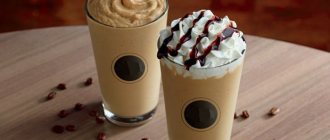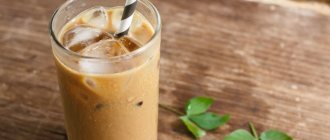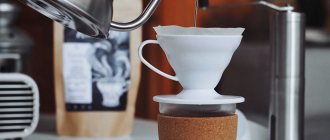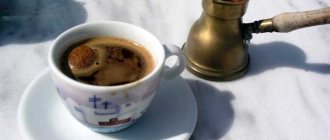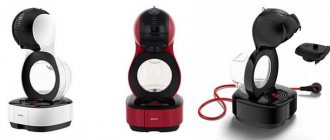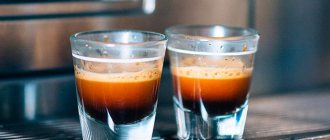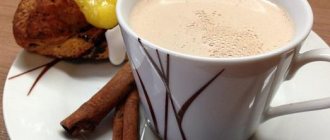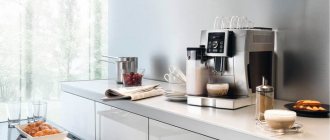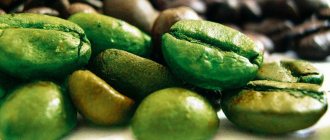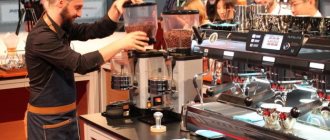To all articles
SCA Study That Refutes the Critical Importance of Temperature
It turned out that when the target TDS and extraction level are achieved, the taste is practically independent of the brewing temperature
Peter Giuliano, SCA chief scientist and executive director of the Coffee Science Foundation, interviewed one of the researchers, Professor William Ristenpart, director of the UC Davis Coffee Center. William answered all questions and shared his opinion on the results of the study.
— You claim that the brewing temperature at a fixed strength and extraction has little effect on the taste of filter coffee. Isn't this contrary to what most coffee experts think? Do we understand correctly that temperature is not important?
— No, the temperature of the water definitely affects the rate of extraction of coffee components. But our research shows that only the final strength of the drink and the level of extraction are really important. If these indicators are the same for two different versions of the drink, it does not matter what temperature the water was. Even professional tasters don't feel the difference.
Brew temperature has a big impact on how you achieve your desired strength and extraction. But it is more important to focus on the result itself, and not the method of achieving it.
“I know this is part of a multi-year study on filter coffee brewing that was conducted in collaboration with the Coffee Science Foundation. What is the history of this research and why did you start researching coffee brewing temperatures?
“We wanted to study the temperature of the brewing water because it gets a lot of attention. The topic is of interest to many segments of the coffee industry, including the support of Breville equipment manufacturers.
In our research, we relied on the Coffee Brewing Control Chart. It was developed by Ernest Lockhart in the 1950s. It now needs to be updated using modern sensory science methods.
Coffee Brewing Control Chart designed by Ernest Lockhart
Our initial hypothesis was that brewing temperature would make a big difference. We were surprised to find that this was not the case. If you control the strength and yield of the extraction, then the water temperature does not play a significant role.
- Is it possible to drink coffee at a temperature
— Independent and dependent variables seem to be important here. Can you explain these concepts?
— I’ll explain using the example of preparing coffee with different degrees of roasting. The independent variable will be the degree of roast, and the dependent variable will be the degree of bitterness and acidity in the cup. Note that in this example, the independent variable “roast” was itself dependent on other parameters. For example, how long you roasted and how much heat you used.
In experiments, an independent variable is a parameter that does not depend on the course of the experiment, and which you change yourself. And the dependent parameter is the parameter that changes during the experiment and is of interest to you. The independent variables are fixed. For example, this is the strength and extraction we want to achieve. But the taste under these parameters can change - this will be the dependent variable.
In our study, the independent variable was grind size and brewing time. This way we could vary them to assess the impact on sensory attributes.
— In your experiments, coffee was evaluated at three temperatures: 87 °C, 90 °C and 93 °C. Why did you choose these temperatures?
— These were the optimal temperatures for our coffee maker.
We used a Curtis G4 drip coffee maker with programmable flow rate. This allowed precise control of the overall brew time to achieve the desired strength and extraction level at a specified temperature. For example, at lower temperatures we brewed longer.
Next we wanted to test the temperature of soaked coffee evenly distributed at lower temperatures. Current Golden Cup standards specify a minimum permissible brewing temperature of 92°C. By reducing it, we had to greatly affect the taste. However, this did not happen.
“So the basic idea is that total dissolved solids (TDS) and extraction percentage have a greater impact on flavor than temperature. What about other variables like brew time or grind size?
— We must be careful in terminology: the amount of dissolved solids (TDS) and extraction level can be dependent or independent variables. It depends on what experiment you are talking about. For example, you could change the grind size for several different coffee samples and then measure the final TDS in each. In this experiment, grind size is the independent variable and TDS is the dependent variable.
For our study, we varied the grind size and flow rate to achieve a specific TDS. The resulting sensory profile was then measured at this TDS. In this case, the independent variable is TDS and the sensory attributes are the dependent variables.
Brewing time, grind size, and brewing temperature are important for brewing coffee. But they are important because they influence what TDS and extraction level you get.
- Ideal water for making coffee
Water temperature is not a goal, but a way to achieve target TDS and extraction levels
— How will the research results affect the coffee industry as a whole?
— Firstly, the requirements for baristas will change. Currently, baristas are not certified if they fail to maintain water temperatures between 92 and 96°C. But our results show that coffee prepared at 87°C is no different from coffee prepared at 93°C. Therefore, the barista will be able to use a wider range of temperatures.
Secondly, lower water temperatures reduce the risk of burns. This makes the barista's job safer.
Thirdly, lower water temperatures will save resources for heating water and reduce carbon dioxide emissions into the atmosphere. This is important for entrepreneurs who want to make their coffee shop more environmentally friendly.
— What research are you planning for the near future?
— We experimented with making coffee in a drip coffee maker. And they always took washed processed grain for this. But it is possible that coffees with more exotic sensory profiles will exhibit a more pronounced dependence on brewing temperature. For example, notes of blueberries in naturally processed Irgacheff coffee. Additional research will be required to test this hypothesis.
Additionally, in this study we examined a fairly narrow temperature range. We are currently experimenting with cold brew coffee and have some interesting preliminary data so far. We will be happy to share new results in the near future.
Monitor TDS and extraction level, not water temperature
According to research, the temperature of the brewing water does not affect the taste of filter coffee. It is much more important to monitor TDS and extraction levels.
Delicious coffee is produced when TDS is between 1.15% and 1.45% and extraction is between 18% and 22%. It doesn’t matter what water temperature you used to achieve these results. There is no difference in taste. We talked in more detail about how to influence TDS and extraction level in the previous article.
These results apply to temperatures ranging from 87 to 93 °C and washed processed coffee. More research is needed to understand whether the taste will change with lower temperature water and differently processed coffee.
- How many grams of coffee does it take to make 1 cup in a coffee machine? Which cars are more economical?
You might be interested in:
Is coffee really harmful?
Apr 22, 2021 · 10 min. for reading
6
To leave a comment, you must log in to your personal account or register.
| All topicsCoffeehackBarista |
All topicsCoffeehackBarista —>
Characteristic
Production
When a plant produces a soluble extract, the grains go through several stages of processing. What is described in the article “What is coffee made from?”
As a result, coffee granules or powder lose the taste properties that are characteristic of the beans. But we will teach you how to make a tasty, aromatic and healthy drink from instant coffee.
Before we tell you how to brew the instant version, let’s find out its advantages and disadvantages.
Advantages and disadvantages
Among the advantages of the drink: it is quickly prepared, has a rich taste, and can be diluted with various ingredients.
There are more disadvantages compared to its natural grain counterpart. The drink has an adverse effect on kidney function. It washes away calcium, magnesium, potassium, disrupts the water balance, and promotes the formation of stones.
No matter how tasty the powdered extract is prepared, it should not be drunk by people who have problems with the cardiovascular system: coronary heart disease, hypertension, cerebrovascular accidents.
It is not recommended to drink instant coffee for people with chronic diseases of the gastrointestinal tract and duodenum: cholecystitis, gastritis, colitis, ulcers.
The limitation is due to the increased acidity of the product - 3-4 pH. The normal value for the gastrointestinal tract is 5–7 pH, for the duodenum – 5.6–7.9 pH.
Types and selection criteria
Coffee powder extract may contain bean waste and food additives (E636) to enhance the aftertaste and aroma. The finished hot drink emits a noticeable chemical smell, and the taste becomes cloying.
Interesting! How to choose a Turk for coffee
Continuing the topic, we recommend that you read the article “Freeze-dried coffee: what does it mean and how is it made.”
The article “The most important things about granulated coffee” contains information about this type.
When choosing delicious coffee from powder, sublimate or granules, pay attention to trusted brands and user reviews.
Before preparing, pay attention to the additives and brewing method indicated on the package.
What is the temperature for making coffee?
Cup brewing is an immersion brewing method where the coffee is in contact with water throughout the brewing process. The drink turns out thick and dense thanks to small particles dissolved in water and the absence of additional filtration.
Making coffee in a cup is easy and convenient because you don’t need any special devices. In order to get a balanced and enjoyable drink, you need to know what parameters affect the taste of coffee. We share the secrets of how to make delicious coffee in a cup.
Water temperature and properties
Coffee consists of almost 99% water, so its properties and composition have a great influence on the taste. With soft water (TDS or mineralization 75–100 mg/l), the coffee will be brighter and more acidic. With mineralized water (TDS more than 100 mg/l), the taste will be a little flat because the acidity will be less pronounced.
Not everyone has a professional water filter or remineralizing cartridges, so we suggest making coffee with bottled water. We conducted tests and found out that the Holy Spring and Nestlé waters are close to ideal. If your nearest store doesn’t have these, choose water according to these indicators: mineralization 100 mg/l, pH level 7.0.
Pay attention to the mineralization and pH of the water used
The water temperature should be 93–95 degrees. If you don't have a thermometer, simply boil the kettle and wait 2 minutes after boiling.
Cup
A cup of any size, shape and material is suitable for brewing. However, there are several nuances that will help make your coffee taste more pleasant.
Take a tall cup with thick walls. If the walls of the cup are thick, the temperature of the water will drop faster at the time of pouring. Then the extraction will be slightly lower, but then the temperature will remain longer - and vice versa. In a tall cup, coffee particles will better settle to the bottom and will not end up in your mouth with the first sip.
Grinding degree
Grinding affects the purity and balance of coffee flavor. Choose a burr grinder; it grinds coffee more evenly than a blade grinder. When grinding evenly, the coffee particles are brewed at the same time.
This is what the grind should look like for brewing in a cup
To prepare coffee in a cup, we recommend choosing a medium grind. If you don't have a coffee grinder, use a pour-over grind, it's just the right size.
Dosage
Recommended brewing proportions are 60 grams of coffee per liter of water. A standard cup contains about 200 milliliters. For this volume you will need about twelve grams of coffee - that’s about 4 teaspoons. It's good if you have a kitchen scale at home, it will be easier to prepare a delicious cup of coffee.
Evaluate the taste after brewing. If the coffee is bitter and a little watery, add a little more coffee. If the taste is too acidic and herbaceous, reduce the dosage of coffee. Read more about how to control the taste of coffee here.
Step-by-step instructions for preparing coffee in a cup
Step 1. Pour bottled water into the kettle, boil and wait two minutes.
Step 2: Pour coffee into cup.
Step 3. Pour water over the coffee until everything is thoroughly mixed. Do not interrupt the flow of water so that the temperature in the cup remains constant.
Step 4: Leave the coffee to brew for 4 minutes. There is no need to cover the cup.
Step 5. Mix well with a regular teaspoon so that the coffee particles from the surface settle to the bottom.
Step 6: Wait up to 8-10 minutes for the coffee to cool slightly. After that, start drinking.
If you drink this cup after a long time, overextraction will occur - you will feel excessive bitterness, dryness, and low acidity. This happens because the coffee continues to extract in the cup.
What factors affect the taste of coffee?
To ensure you get a delicious cup of coffee, pay attention to these points.
Grain quality
The taste of the drink depends on the area, soil, climate and altitude of coffee berries. For example, Brazil will be denser and nuttier, while Ethiopia will be floral and citrusy. Look for the flavor description on the packaging.
The degree of roasting and its freshness
Coffee with a filter roast profile develops best in a cup. But if you like coffee with milk, use espresso roasted coffee. The more time passes after roasting, the flatter the coffee tastes. Therefore, try to prepare coffee within one to one and a half months after roasting.
Package
The bag should be opaque to protect the coffee from sunlight. A degassing valve and zip lock are necessary to keep air out. This way the grains will interact less with oxygen and retain their flavor and aromatic properties longer.
Delicious coffee is the one you like. Don't be afraid to experiment. Try different varieties and proportions, so you can discover all new shades of taste.
Cooking secrets, milk and foam
To properly prepare instant coffee at home, warm the cup well, for example, pour boiling water over it.
Pour 1-2 teaspoons of granules into an empty container, add sugar as desired. Stir the resulting mixture, pour a couple of tablespoons of hot water.
Grind everything again until smooth, add water to the desired level. Its temperature should not exceed 90 degrees. Boiling water is not recommended, as it interrupts the taste and makes the drink “run away.”
If you like to drink it with milk, it is better to add it warm. When cold, it dulls the aroma.
To prepare the foam, instead of granulated sugar, use powder, 1-2 teaspoons more. You will need 50 milliliters of cold clean water for a couple of spoons of sugar, along with a spoon of coffee extract.
You will have to whisk the foam by hand for a long time and vigorously. To make several servings, it is better to use a blender. The height of the “cap” will be greater if you take powder rather than sublimate or granules.
Main causes of failures and their elimination
First, you need to make sure that the resulting drink has not heated up in the machine and has not cooled down in the cup. Many engineers advise warming up the mug a little before placing it under the stream (for example, holding it under hot water or over steam). This will ensure that the coffee does not cool down due to the low temperature of the liquid in the machine.
If the problem is not in the dishes, then the cause can be sought in incorrectly set settings (in the selected mode). Using the instructions in the instructions, you need to go to the menu and set the temperature parameter to the maximum value.
In a coffee machine, cold coffee is often produced due to an unheated brewer. This happens when the device has not had time to warm up after being turned on, and its owner has already decided to make coffee. In such a situation, you should just wait.
But there are failures that require the attention of specialists. These include:
- problems with heating elements (heating elements, etc.);
- vapor block malfunction;
- control module malfunction;
- oxidation of contacts;
- problems with the controller.
In the first case, you will immediately understand that there is a problem. The process of preparing the drink will suddenly become long, and its taste will lose its richness. It will begin to seem that instead of coffee in the mug there is ordinary water (sometimes with a coffee smell). Extraneous noise will also appear. A common cause is scale that needs to be cleaned from internal elements. It is this that leads to defects in the operation of the heating element , as a result of which it will need to be replaced.
The second problem will be especially acute for lovers of drinks with a high milk content. It simply won’t whip, and the temperature will also begin to drop. If necessary, the technician replaces the entire unit or its faulty parts. There are also cases when, to eliminate a defect, it is enough to clean the device from dirt.
Independent unqualified intervention in the design in the event of a malfunction of the control module can lead to the device becoming completely unusable. The engineer will configure the board and, if necessary, replace it with a new one.
Oxidation of contacts is manifested by spontaneous shutdowns of the device. When the degree of oxidation is severe enough, your machine simply stops working. This requires knowledge in the field of electronics, as stripping of wires will be required.
The controller is an element through which energy is transmitted to all parts of the coffee maker. In particular, he gives it to Teng. Therefore, its malfunction leads to the fact that the coffee machine prepares warm coffee and completely fails. Manufacturers do not recommend replacing it yourself.
If your unit does not heat the water, then contact the engineers of the A-Iceberg Unified Service Service for help. They will help you fix the problem and also provide a guarantee on the work done and the parts replaced.
Cooking recipes: classics
Let's look at how to properly brew instant coffee according to a standard recipe. To prepare, take crushed powder or freeze-dried granules and hot water.
Sequence: choose a thick-walled container, pour in a couple of spoons of granules or powder. Boil water, let it cool to 85-90 degrees. Pour the liquid into a cup, add granulated sugar as desired.
Interesting! How to brew coffee in a saucepan on the stove
If you are heating water that has already boiled, remove the kettle when bubbles first form, which will save time.
Infuse the coffee in the cup for 2-3 minutes.
Other drinks are also prepared from instant coffee: cinnamon, Egyptian, iced, cappuccino. Let's take a closer look.
Coffee brewing range
drinking temperature
Brewing temperature 91–96 °C
While the temperature range for drinking coffee is wide, the range for brewing it is relatively narrow. Let's start with the fact that the coffee grounds should be at room temperature. When water is hotter than 96 ° C, it can scald the grounds, and the drink will acquire a burnt taste. And water colder than 91 ° C is not able to fully extract the taste.
The most suitable temperature for brewing is 93 °C. It is in the middle of the range, and it is easy to bring water to this state, even if you do not have a kettle with a temperature display at hand. How to do it?
- Boil water and pour it into some container.
- After boiling, let it sit for 30 seconds.
Above 82°C: spreading heat.
At this temperature, our taste buds are unable to detect the nuances of the drink's taste. However, extra-hot coffee is ordered quite often. There may be several reasons:
• you need to bring hot coffee to the car;
• like the feeling of warmth spreading throughout the body;
• there is bad weather outside and you urgently need to warm up.
49–60 °C: triumph of aroma.
In this range the coffee notes shine. Everything that the authors of the variety put into their work is revealed in a cup at this temperature. Floral, chocolate, bread shades appear in all their splendor.
Below 48°C: sweetness and acidity.
When the coffee has cooled down, many people try to warm it up. But you don't need to do this! When reheated, the drink irrevocably changes its taste. It is in this state that the sweetness and acidity of the coffee are revealed, which go unnoticed at higher temperatures. At this time, apple and citrus notes are clearly felt, and the drink seems to become sweeter - these sensations give a special mood.
What temperature coffee do you prefer? Share your opinion
